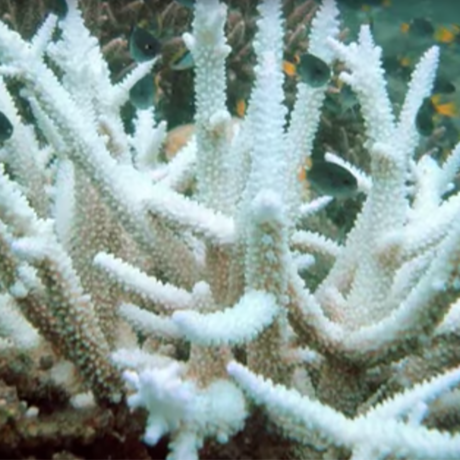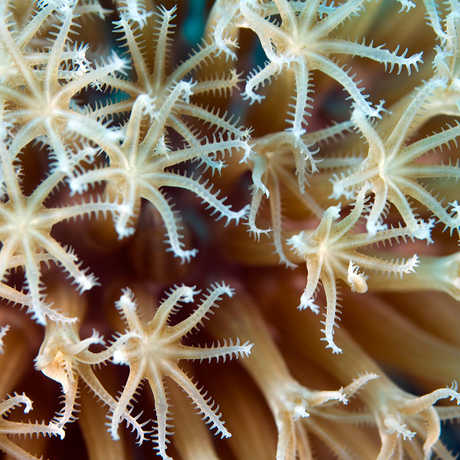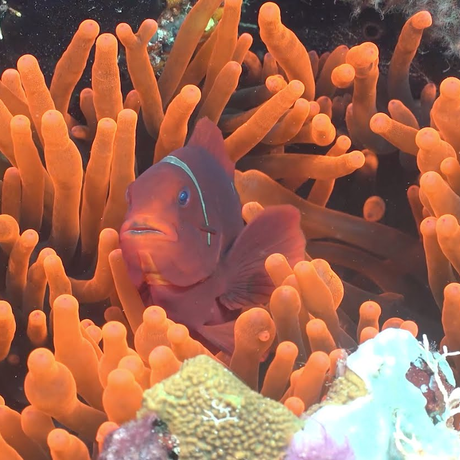Be dazzled by the brilliant colors of thousands of tropical fish swimming across your screen.
Eels, crabs, starfish, nudibranchs—a plethora of charismatic organisms interact in a coral reef, making it one of the most diverse ecosystems on the planet.
About the Video Clip
Duration: 2.5 min
Grade Level: Appropriate for all ages; content connects to NGSS standards for grades 5 and above
Dive underwater to meet some of the many creatures that inhabit a coral reef. Hidden in nooks and crannies, we find a multitude of organisms, in a complex web of connections.
Why does the moray eel appreciate the cleaner shrimp and the cleaner wrasse? How does the trapezia crab defends its home? What does a nudibranch—a brightly-colored sea slug—eat?
You can download the still images below to use when teaching about the kinds of animals that live in coral reefs—just right click and 'Save Image As'.
Investigation: Coral Reef Virtual Surveys
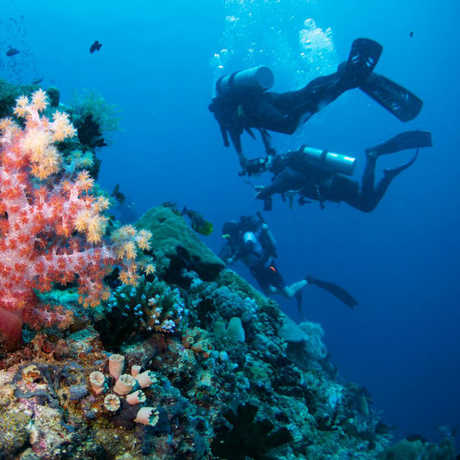
Your students can get a first-hand view of coral reef life with the XL Catlin Seaview Survey coral reef transect data and virtual dives!
Choose a region of the globe you'd like to explore. Clicking on 'View Details' of that region will take you to a page where you can select a coral reef transect that can be viewed in various image formats, from quadrats to 360 stills. Or completely immerse yourself in a Virtual Survey in places like the Philippines, Belize, and the Galapagos. Your students can collect data and carry out investigations looking at the different species that are present in reefs around the world.
Lesson Plan: Coral Reef Relationships
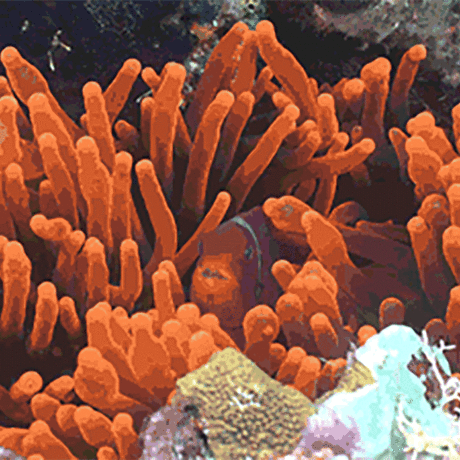
What kinds of interrelationships among organisms exist in a coral reef? In this lesson from the Smithsonian for grades 6-8, students will explore the transfer of energy and matter in a coral reef ecosystem and how they relate to symbiotic relationships between organisms.
This lesson supports Ocean Literacy Principle #5: The ocean supports a great diversity of life and ecosystems.
Connections to the Next Generation Science Standards
While this video doesn't necessarily cover the following standards in depth, it is a compelling resource you can use to supplement your curriculum that does.
Disciplinary Core Ideas
- 5-LS2-1 How does matter and energy cycle through coral reef ecosystems?
- MS-LS1-6 What evidence from coral reef ecosystems showcases the role of photosynthesis in the cycling of matter and flow of energy into and out of organisms?
- MS-LS2-3 Considering the relationship between coral cells and zooxanthellae, how can you explain the pattern of interaction among these organisms? How do matter and energy move through a coral reef ecosystem, or through the system of a single coral reef animal?
Crosscutting Concepts
- Energy and Matter





